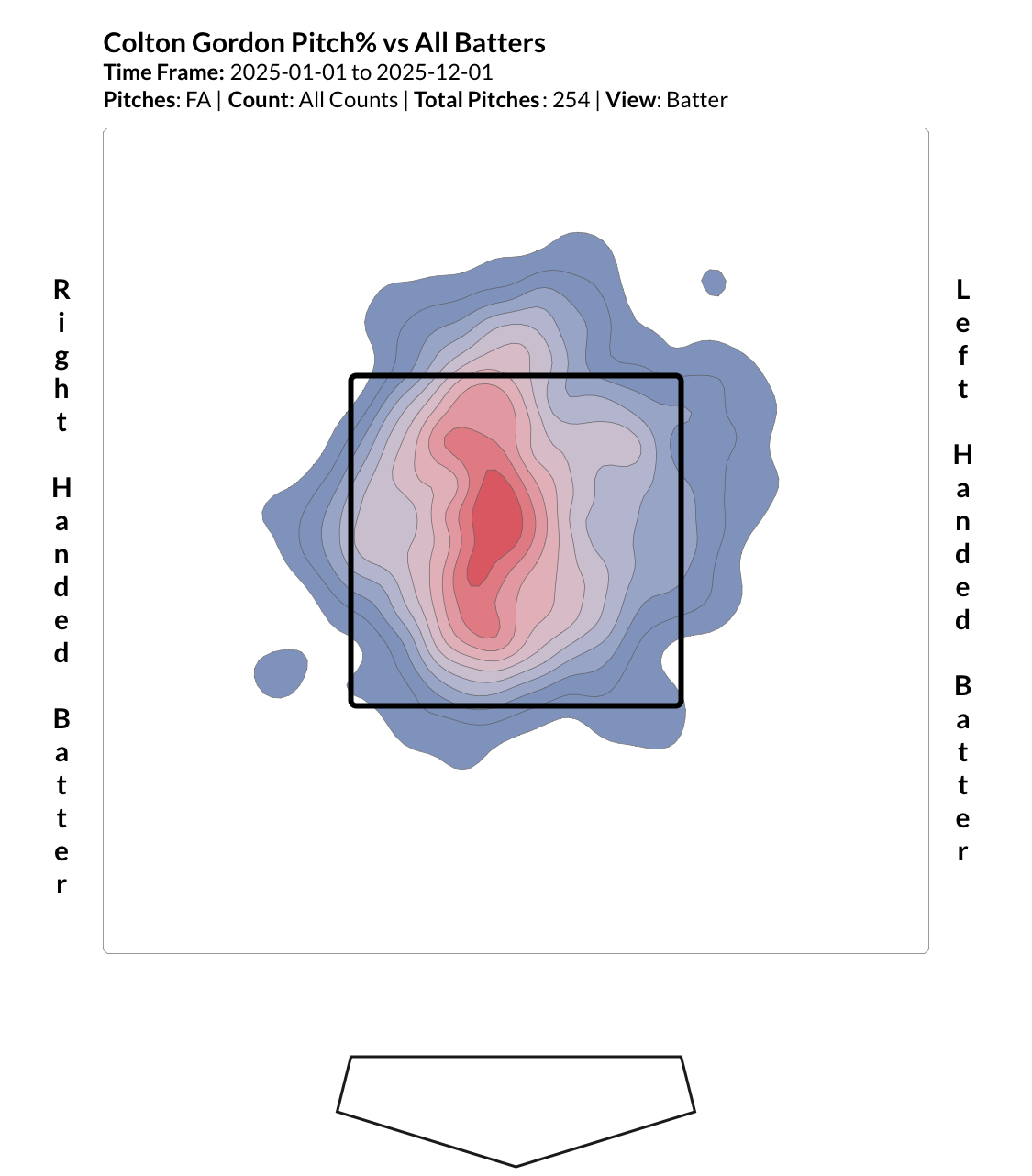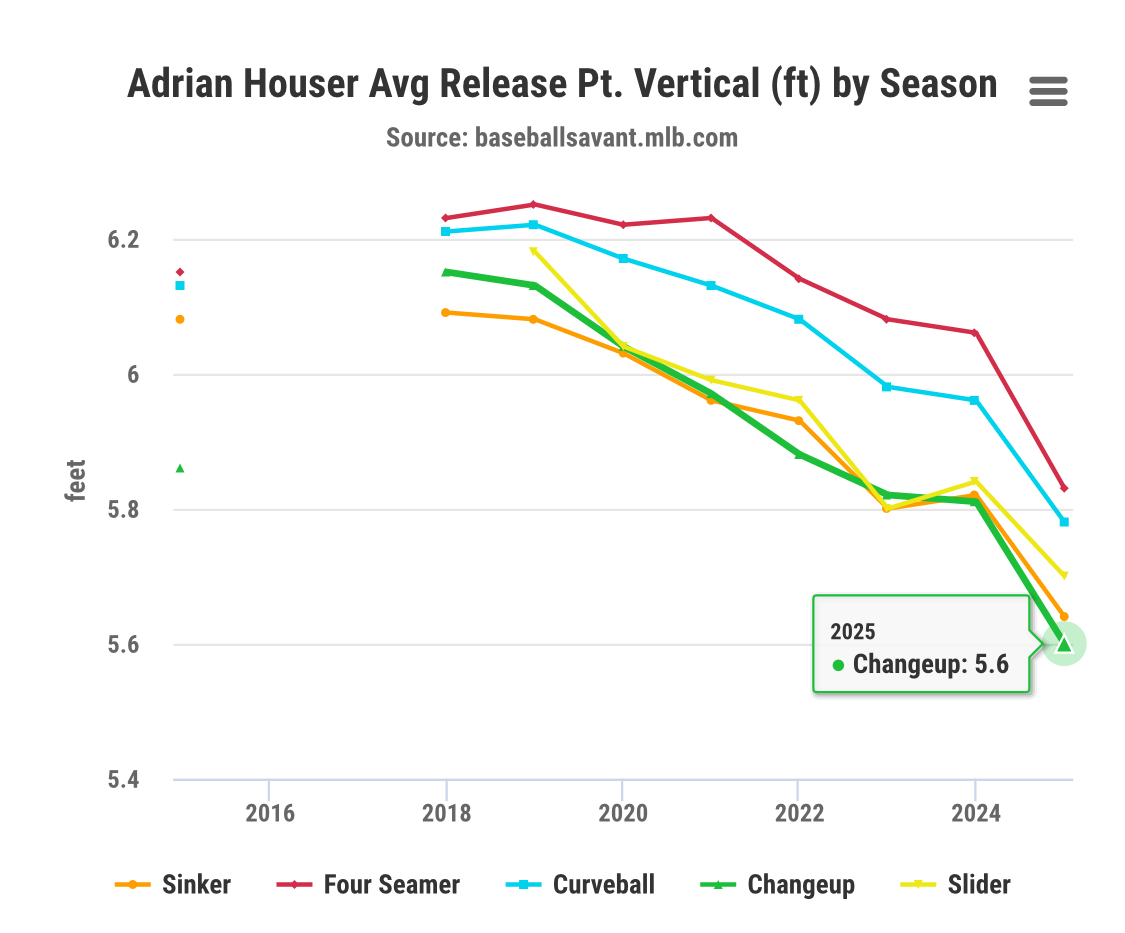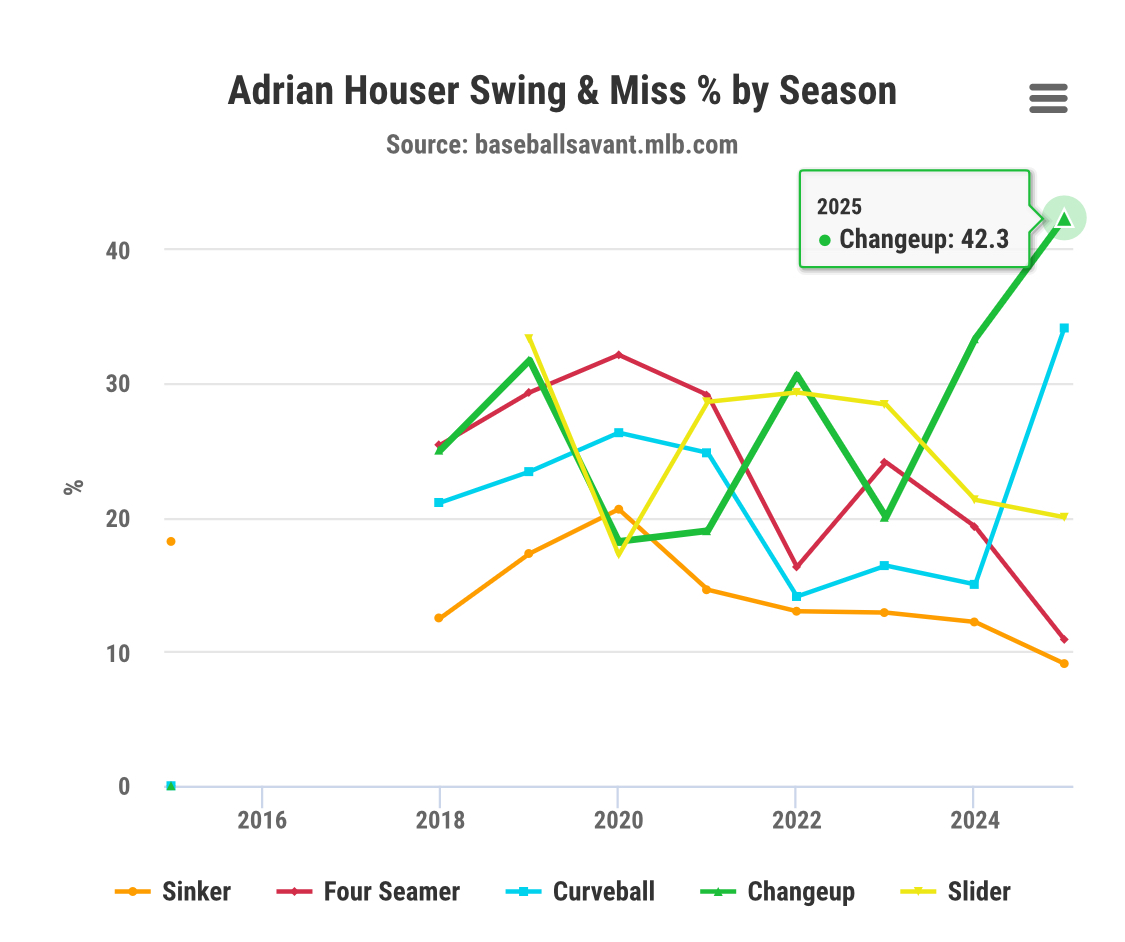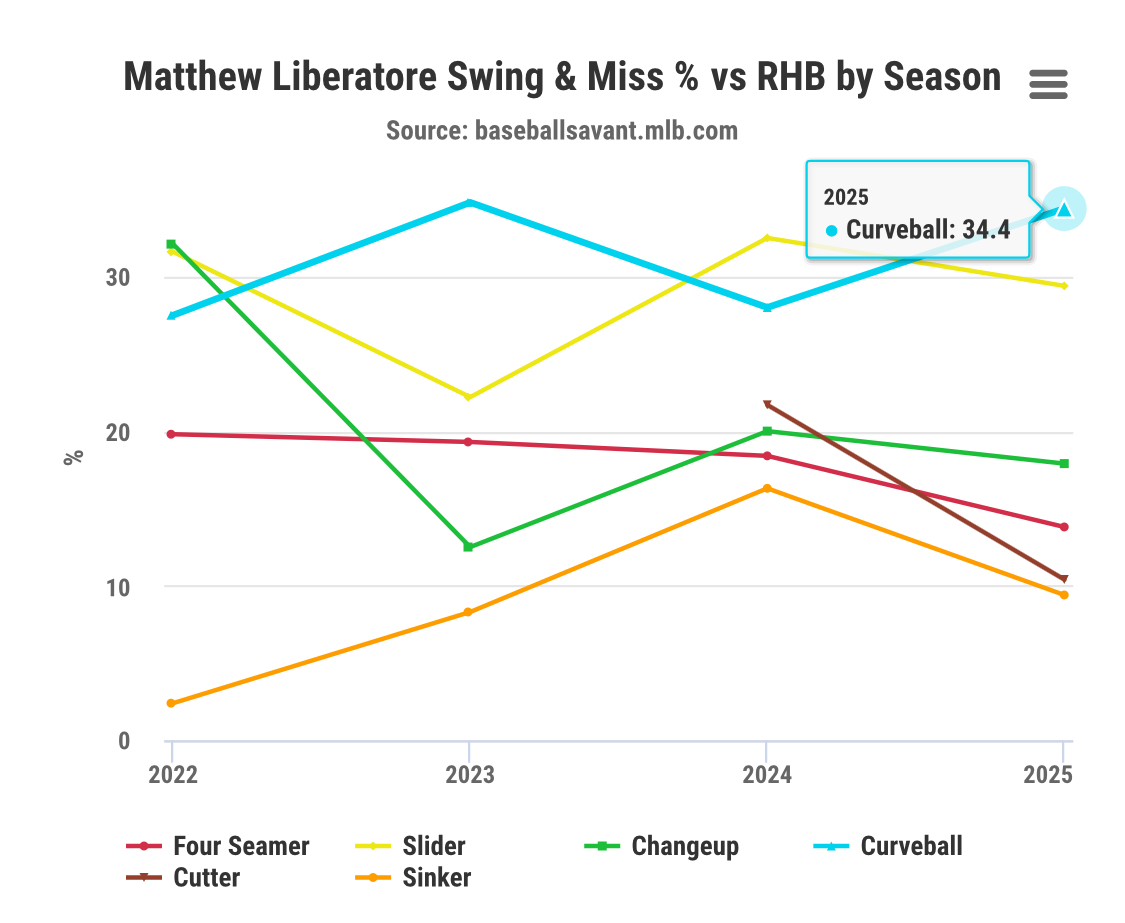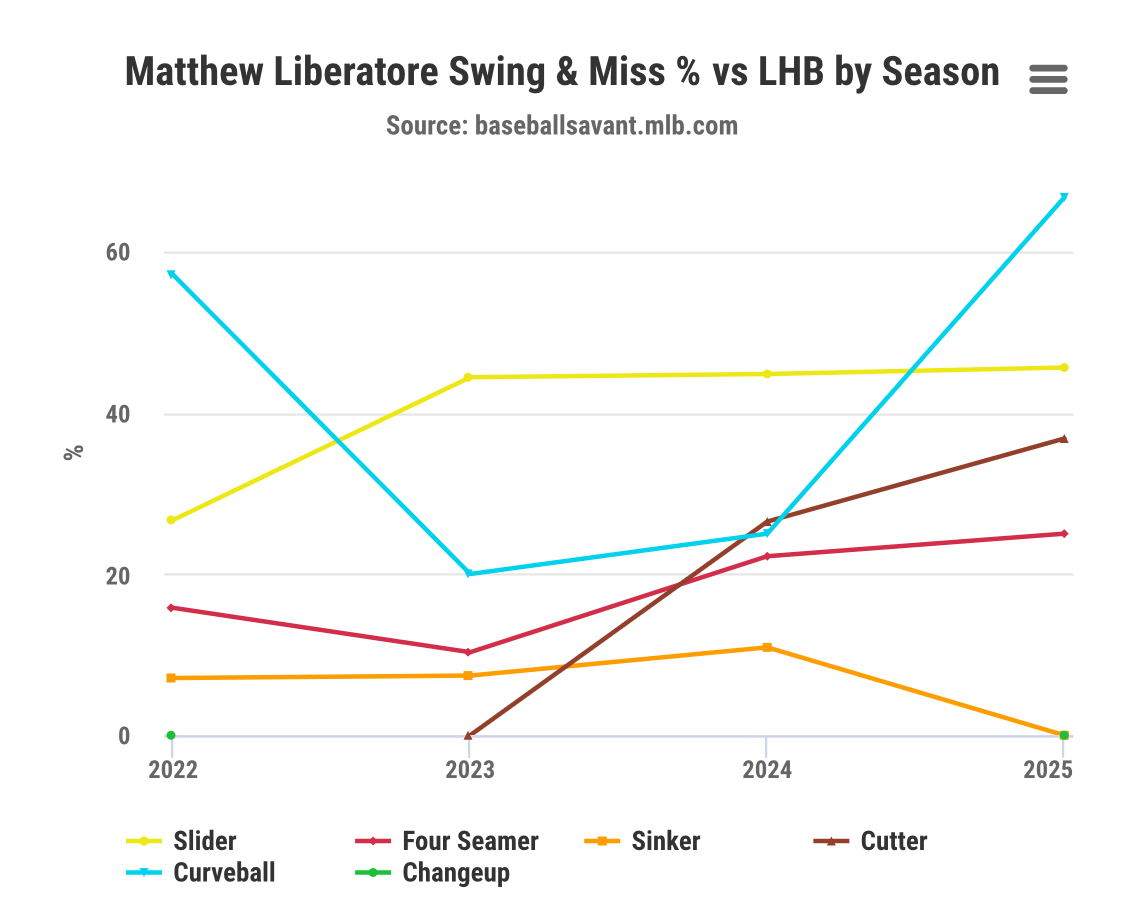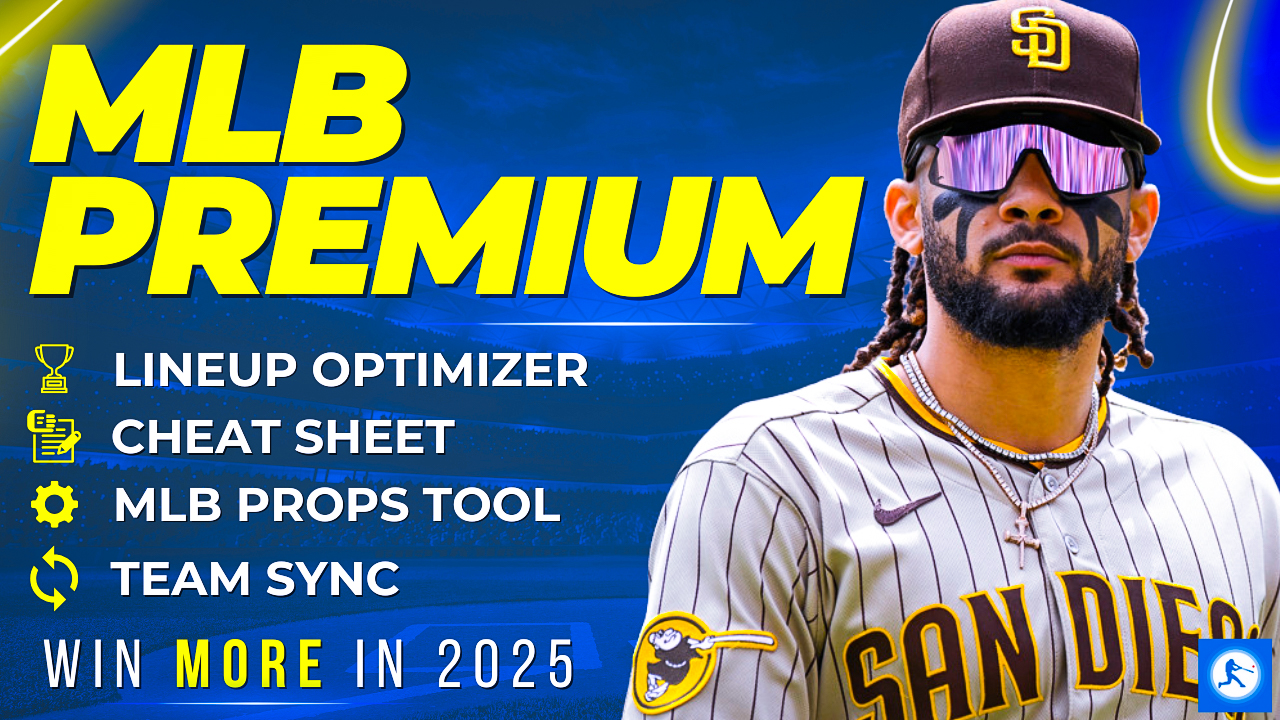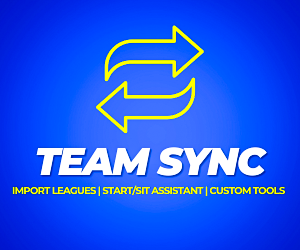Michael Cecchini's deep dive into four fantasy baseball starting pitchers to decide if their surprisingly good form merits a roster spot or staying on the waiver wire for Week 14 (2025).
Welcome back to Unlikely Aces, the regular feature where we take a magnifying glass to a group of surging starting pitchers. We have passed the halfway point in terms of games played for every MLB team, so it’s important to make sure we are maximizing our fantasy rosters.
Streaming pitchers can be a powerful tool in our game, but it is often dangerous too. Sometimes, a pitcher with questionable skills goes on a hot run, and in other cases, the underlying skills are strong but the results don’t match. That’s where we come in, sifting through the data to decide what we can trust.
Are these unlikely aces for real? We’ll take a look at four starters with solid recent results and decide if we should target them on waiver wires or leave them for our opponents before the inevitable regression hits. Rostership rates are taken from Yahoo! Public Leagues.
Be sure to check all of our fantasy baseball lineup tools and resources:- Fantasy baseball trade analyzer
- BvP matchups data (Batter vs. Pitcher)
- PvB matchups data (Pitcher vs. Batter)
- Who should I start? Fantasy baseball comparisons
- Daily MLB starting lineups
- Fantasy baseball closer depth charts
- Fantasy Baseball live scoreboard
- Fantasy baseball injury reports
Colton Gordon, Houston Astros
29% rostered
Before Tuesday, Gordon’s 3.98 ERA and 1.30 WHIP through eight starts had been a lifeline for the battered Astros rotation.
(He pitched at Coors Tuesday and got lit up for four earned runs, nine hits, and two walks in 4.2 innings, raising the ERA to 4.37. The mountain air had his pitches moving 3-8” less than his average, and he was the victim of a .421 BABIP. We’ll examine his pre-Coors metrics and performance, given that he will not pitch on the moon again this season.)
If it feels like Gordon came out of nowhere, you’re not alone. FanGraphs ranked him the 28th prospect in the Houston system last year, projecting him as a potential “backend starter.”
Gordon is a classic command-first lefty, which is a nice way of saying the stuff does not pop. His 2.9% walk rate is about as good as it gets (99th percentile), and his 111 Location+ ranks ninth among starters (min. 40 IP).
On the other hand, most of Gordon’s pitches rate below average by pitching models (overall 95 Stuff+). He does get an outstanding extension (84th percentile), and scouts have noted that his cross-body delivery creates deception for hitters.
Nevertheless, Gordon has to tiptoe around the edges of the zone with pinpoint command, given an underwhelming 91 mph fastball that he throws almost 38% of the time. He is a heavy fly ball pitcher (35.7% GB%, 18th percentile) and hence, nearly all of the damage he allows is via the long ball (1.8 HR/9).
Gordon’s heavy four-seamer usage is questionable given its results. Although his primary heater gets 3.4” more arm-side run than league average, batters are crushing it. The pitch yields a 50% hard-hit rate, .516 slugging (.456 xSLG), and just a 14.2% whiff rate. Based on Gordon’s heat maps, it is leaking over the middle way too often:
Gordon complements the fastball with a sweeper that he throws 33% of the time. It has been hammered to a .578 slugging and its 25.7% whiff rate ranks 25th of 36 qualifying sweepers. However, it should be better: Statcast estimates a more palatable .393 expected slugging, and it is Gordon’s only plus offering, per pitching models (115 Stuff+).
For some reason, the lefty Gordon throws sweepers 30% of the time to righties. Generally, sliders and sweepers work best against left-handed hitters. Indeed, it is righties that are hurting him overall (.357 wOBA), with a .576 slugging against the sweeper in particular. He has handled lefties quite well (.290 wOBA, 29.7% strikeout rate).
Gordon could consider tossing more of his slow curveball, as it drops 7” more than average, induces weak contact (85.5 EV), and has a decent 28% whiff rate. Then again, Statcast thinks it’s a mirage with a .636 expected slugging, almost 300 points above the actual number (.353).
Gordon has excellent control, limits walks, and plays for a good team. Those are significant positives. The problem is he cannot afford to miss his spots, as evidenced by bloated 1.8 HR/9 and 16% HR/FB rates. He is a decent bench streamer type for 12-team and deeper leagues, but be careful with tough matchups (and homer-friendly ballparks like Coors).
Trevor Rogers, Baltimore Orioles
23% rostered
Rogers is one of the most fascinating recent pitcher reclamation projects. Over his first five seasons, he was a fantasy difference-maker just once, back in 2021 with Miami. Since then, he’s dealt with myriad injuries, lost velocity, and generally disappointed, before being traded to the Orioles last year for Kyle Stowers and Connor Norby.
The trade initially looked like a major steal for the Marlins, as Stowers and Norby have become useful everyday players while Rogers made four starts for Baltimore after the trade and yielded a 7.11 ERA. He then suffered a right knee subluxation in the offseason that delayed his 2025 season debut.
Continuing the trend, Rogers began this season in the Minors and pitched to a 5.51 ERA over eight starts. His velocity sat at 92.3 in Triple-A, a far cry from his 94.5 mark in 2021. Expectations were understandably low when he was called up to the Orioles.
Then a funny thing happened: Rogers was good. He’s made three solid starts, including eight innings of shutout ball against Texas two turns ago. He did get roughed up by the Rays in Tampa, but even that wasn’t a disaster with three earned runs allowed in 2.1 innings.
Rogers’ velocity is up to 93.7 mph this year in the majors, almost two ticks better than 2024 and one tick below his 2021 peak. Baltimore hasn’t remade his arsenal: he’s throwing more four-seamers and changeups and fewer sinkers and sliders. The usage is a bit different, but the repertoire is intact. He has toyed with a new sweeper, throwing it just six times.
The velo boost has the four seamer cooking a bit, as the pitch's 27.8.% whiff rate is the best in four years. It has an improved .281 slugging percentage allowed, too. However, the average exit velocity sits at 91.9 with a 28° launch angle, both of which are similar to last year’s metrics, when it got crushed (.496 xSLG).
The slider, however, might be back. Kind of. It was his best secondary in 2021, and so far, Rogers is getting 37.5% whiffs with it. That is closer to the 40.8% it held in 2021 and an improvement on the 25.9% whiff rate of last season. He’s throwing it a tick slower and getting an extra inch of drop, so it is moving more like the 2021 version:
Rogers has exhibited better control than we’ve seen recently, too, at least intermittently. He has two games with zero walks and two games with three walks this season. In his last start, he struggled to throw strikes (52 strikes on 91 pitches). Still, the overall 7% walk rate would be the best of his career if he holds it.
The pitching models see Rogers similar to a Gordon type: 91 Stuff+ (below average) but 106 Location+ (well above average). The FanGraphs Pitching Bot likewise sees average stuff (49 on the 20-80 scale) with plus command (62), yielding a 3.13 Bot ERA. We’d be ecstatic with those results, but Rogers’ true talent is probably closer to his 3.80 SIERA.
Rogers is pitching much better than last season, although that is a low bar considering he was unusable for fantasy then. The improved velocity and control are encouraging, but he also isn’t blowing anyone away with raw stuff. The Orioles are not providing great team support.
We still do not see Rogers as relevant in shallow leagues, but in 12-team mixed and deeper formats, he makes for a fine sixth or seventh starter.
Adrian Houser, Chicago White Sox
15% rostered
Talk about a reclamation project! Houser was completely off the fantasy radar in the offseason and didn’t even have a team. The White Sox signed him in late May, and so far through seven starts, he has a 1.90 ERA and 1.17 WHIP. Incredible.
Speaking of velocity bumps, Houser is sitting 95 mph on his four-seamer, the highest of his career and 1.4 ticks above last season. The sinker is his primary fastball, and it is likewise up to 93.8, the highest it’s been since 2019 (94.3).
Houser and the ChiSox have made both arsenal and mechanical changes. His arm angle has trended lower over the past few years and now sits at 37°; it was 46° in 2021. This has led to his lowest vertical release points across the board:
The angle and release changes have helped Houser’s pitches move more, especially horizontally. He is getting 1.5-2.5” more arm side run on the four seamer, sinker, and changeup.
Although his overall 19.9% whiff rate is modest, Houser now has two pitches generating 34%-plus swing and miss rates for the first time in his career:
He has smartly, if modestly, upped the changeup and curve usage by about 4% and 8%, respectively.
Of course, Houser’s bread and butter remains the sinker, and despite a slight drop in ground balls (46% from 48.5%), he is mitigating hard contact better than recent seasons. The 6.3% barrel rate and 88.8 EV allowed are his best such marks since 2022.
The public pitching models are not overly impressed by Houser’s changes (overall 93 Stuff+), although his sinker at least is viewed as above average (105).
He is, however, showing better command. This is reflected both by a drop of two points in his walk rate and a plus command score from the models (103 Location+). He will have to keep hitting his spots to avoid big blowups.
Houser is not going to be a “league winner” type for anyone, even in deep formats. An 18% strikeout rate can only go so far. Unfortunately, the team context remains quite poor in Chicago and stymies his win potential. But the changes he’s made look promising and make him a pitcher we can stream in good matchups and use as a bench streamer in deep leagues.
Matthew Liberatore, St. Louis Cardinals
43% rostered
Back to the lefties with Liberatore. The Cardinals' youngster is another renaissance story. A former first-round pick, he looked destined for a relief role after he disappointed to the tune of a 4.99 ERA across his first three MLB seasons.
Well, surprise, surprise, St. Louis decided to give their young players an honest chance this year, and that meant Liberatore in the rotation. This news came out during the final week of fantasy drafting, but even then, his average draft position sat in the 450-500 range. Managers were not excited, if they noticed at all.
Liberatore got lit up by the Pirates in his second start, but from April 13 to May 24, he reeled off eight straight starts of two earned runs allowed or fewer. It looked like he had unlocked more strikeout stuff, although that has waned a bit as he’s settled to a 20% strikeout rate. Overall, he’s put together six wins, a 3.70 ERA, 76 strikeouts, and a 1.16 WHIP.
Liberatore has some similarities to the players we’ve already discussed. His stuff is not overly nasty, but he’s displayed plus command (4.5% walk rate, 102 Location+), leading to a solid 1.16 WHIP. The stuff metrics peg him as average or even a bit below average (97 Stuff+).
Liberatore did not technically add velocity, but by sitting 94.3 mph as a starter, he has maintained the velocity he held last season as a reliever.
That said, his fastballs are not good in terms of velocity or movement. An 84 Stuff+ on his four-seamer is a whole standard deviation below average. The sinker is not much better with an 89 score. But he commands them well with elite 111 and 114 Location+ scores on the four-seam and sinker, respectively.
Liberatore’s breakers are endorsed by the stuff machines (111 and 123 Stuff+ on slider and curveball, respectively). His curve drops more than average, and it’s his best whiff pitch at 37%. He uses it almost exclusively to righties, and it is a real difference-maker:
Liberatore only throws the curve 8% to lefties, but it is rendering them hapless:
At 88.9 mph, Liberatore’s changeup is harder than most and drops less than league average. It's not a huge whiff pitch (17.7%), but it effectively neutralizes righties (.135 SLG, 86 EV).
He might be better served by throwing more curves and changeups to right-handed hitters and minimizing the cutter (13% usage, .605 SLG allowed versus righties). In fact, Liberatore began throttling down the cutter in June to 10% usage, compared to 13-15% in April and May.
Liberatore is tough on fellow lefties, who are slugging just .235 overall against him. His slider is dominating them with a 45.6% whiff rate, 86.1 EV, and .226 wOBA. Southpaw hitters have managed just a 3.9% barrel rate. He essentially turns every lefty into a worse version of Gavin Lux.
Liberatore is not going to crack anyone’s top 40 starters, but he limits walks and home runs and goes deep into games. Despite a couple of blowups, he has allowed two earned runs or fewer in 11 of 16 starts. He’s a mid- to high-3’s ERA guy, just like the ERA estimators say he is (3.87 SIERA and 3.69 xERA). That’s a solid fantasy rotation stabilizer we should add in most formats and trust in most matchups.
More Fantasy Baseball Advice
Download Our Free News & Alerts Mobile App
Like what you see? Download our updated fantasy baseball app for iPhone and Android with 24x7 player news, injury alerts, sleepers, prospects & more. All free!






 RADIO
RADIO








